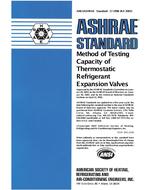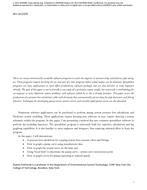The ability for reduction of whole-building energy consumption depends, in large scales, on correct predictions of building thermal loads with the building’s envelope characteristics being one of the most important factors. Because most of today’s building envelopes are complex, three-dimensional networks of structural, insulation, and finish materials, the potential for correct predictions of their thermal performance depends on the availability of acceptable, scientifically valid, consensus procedures for accurately implementing a building’s envelope thermal characteristics into whole-building energy simulation programs.
This paper is discusses a joint LBNL and Fraunhofer CSE project focused on the upgrade of the already existing THERM program and its integration with EnergyPlus, a whole-building energy simulation tool. It is expected that these two programs, combined together, will eliminate typical analytical limitations of most existing whole building energy tools, capable of simulating only simplified, one-dimensional envelopes. The main research challenge is the design of an easy-to-implement upgrade of the THERM numerical tool to allow analysis of complex building envelope structures. The new version of THERM needs to be able to modify thermal characteristics of the complex three-dimensional (3-D) wall assemblies in a way to enable their use in wholebuilding energy simulation programs. It will be achieved through an application of the unique theoretical procedure, which will allow a generation of the simplified one-dimensional (1-D) wall geometry and material characteristics to fully and accurately capture the dynamic effects of thermal bridges.
At this stage of the project, the research team focuses on development of theoretical bases for necessary changes in the THERM framework. This paper explains the theoretical methodology that is used and presents some results from the series of steady-state and dynamic heat transfer simulations performed on building envelopes’ architectural components to illustrate the accuracy limitations associated with thermal calculation methods recommended by building energy codes worldwide.
Citation: Thermal Performance of Exterior Envelopes of Whole Buildings XIII, Conference Papers
Product Details
- Published:
- 2016
- Number of Pages:
- 16
- Units of Measure:
- Dual
- File Size:
- 1 file , 4.3 MB
- Product Code(s):
- D-BldgConf16-63


